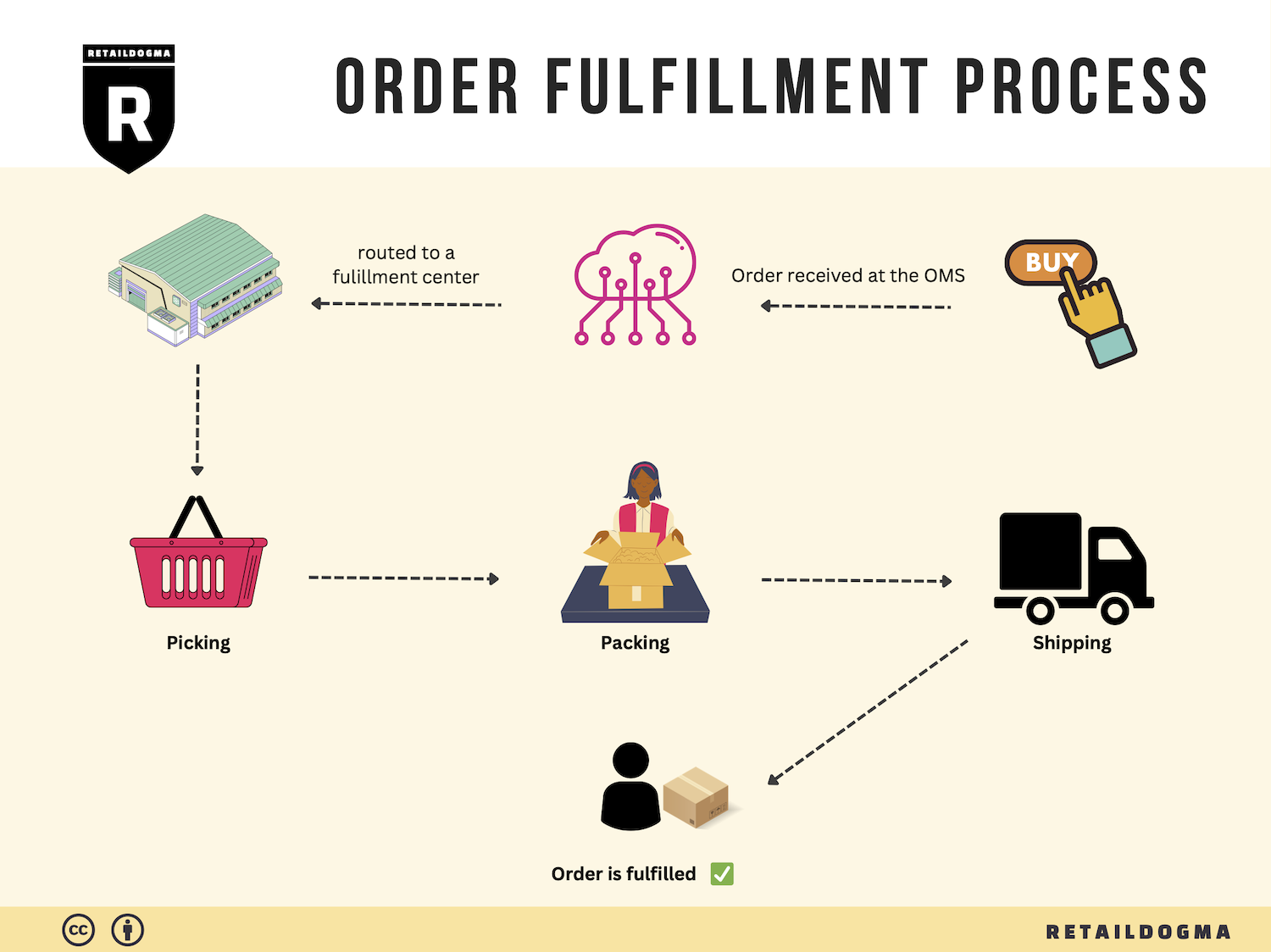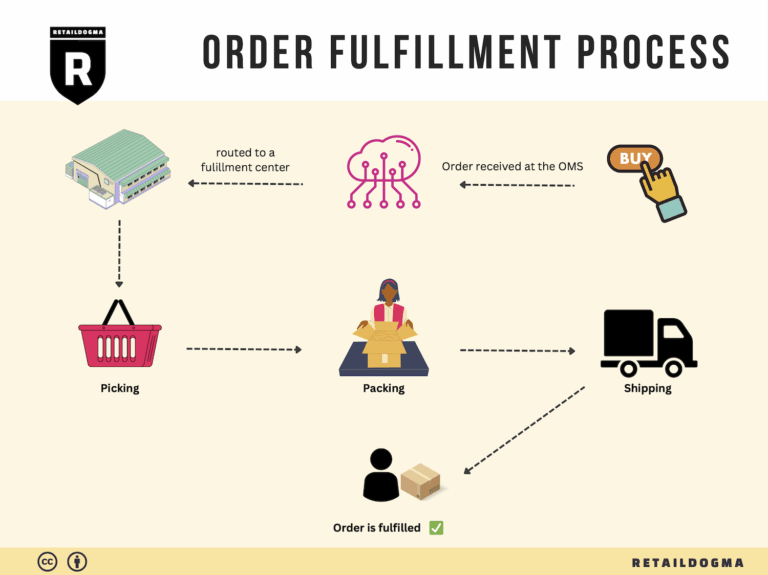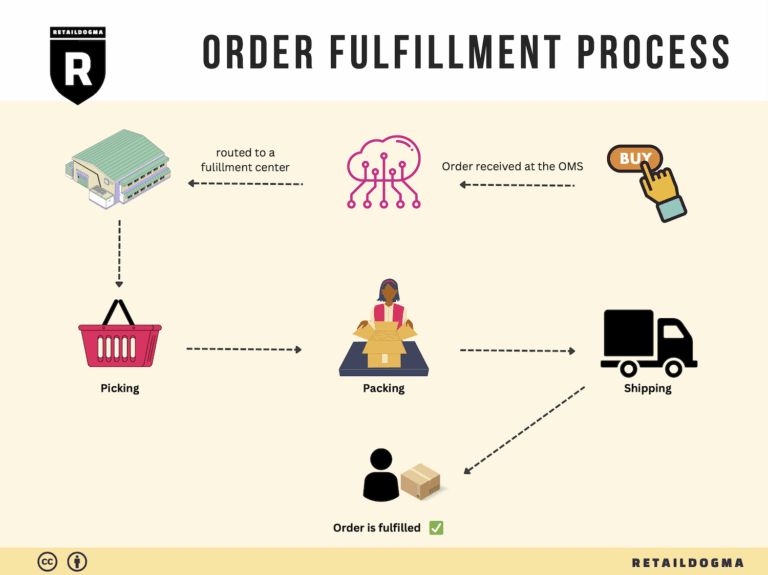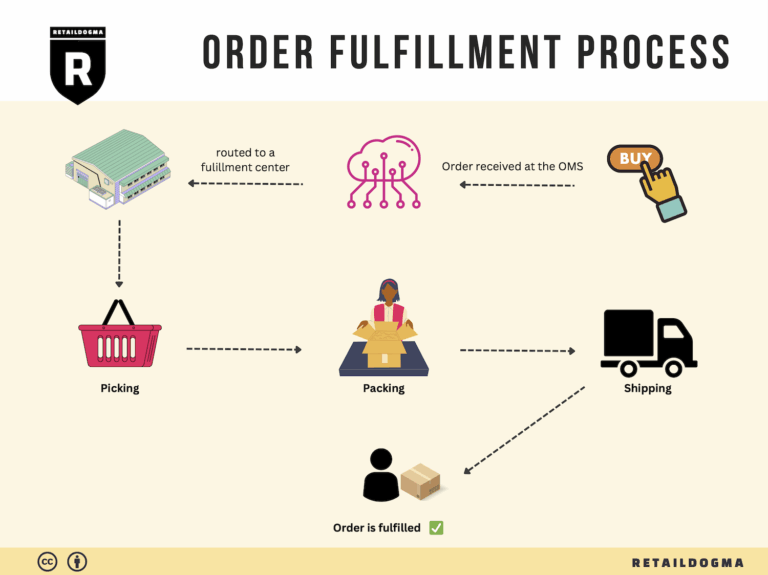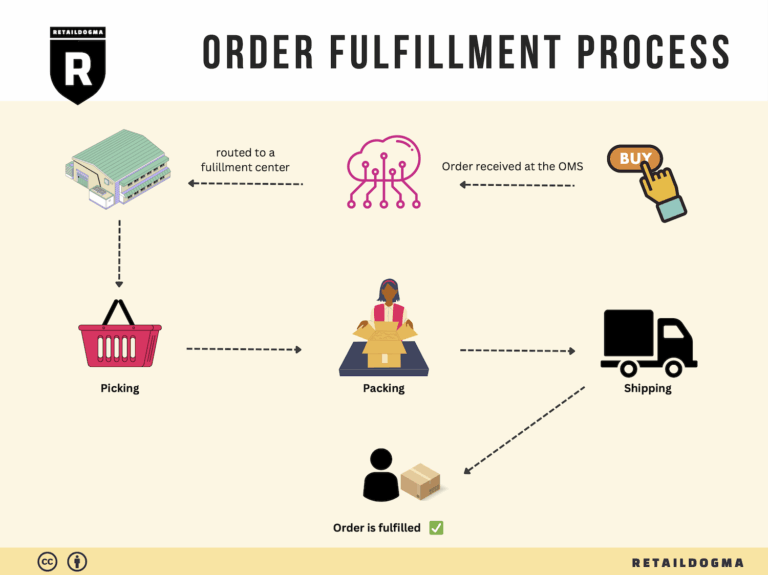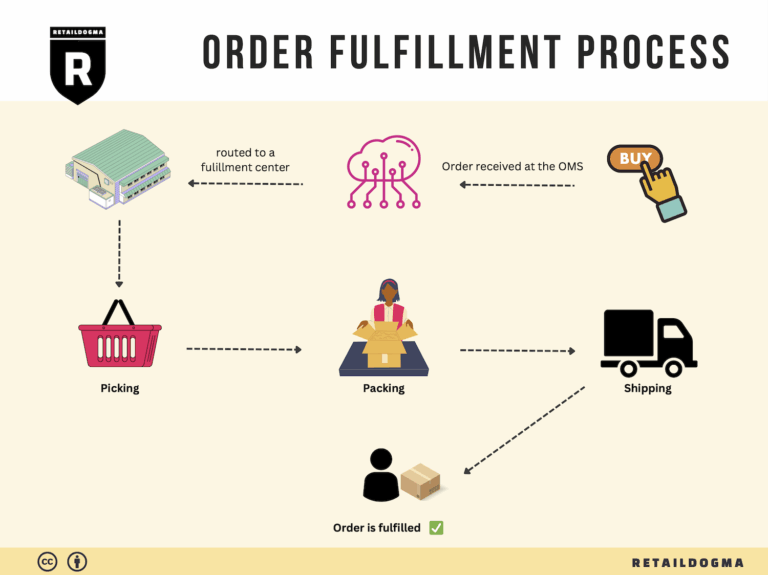What Is A Fulfillment Center? A Complete Guide (2025)
What is E-commerce Fulfillment? An Introduction for Growing Businesses
Understanding E-commerce Fulfillment: A Key to Scaling Your Business
As an e-commerce business owner, you may find yourself grappling with the overwhelming tasks of packing and shipping orders. The excitement of growing sales can quickly turn into a logistical nightmare as you struggle to meet customer expectations for timely delivery. This is where e-commerce fulfillment comes into play. Simply put, fulfillment is the process of getting a product from your inventory to your customer’s doorstep, and it encompasses everything from order processing and inventory management to packing and shipping.
In today’s competitive marketplace, efficient fulfillment is critical for success. With consumer expectations rising, businesses must adapt their logistics strategies to ensure they can deliver a seamless shopping experience. This guide aims to demystify e-commerce fulfillment and provide actionable insights for growing businesses.
What This Guide Covers
-
Different Fulfillment Models: You’ll learn about various fulfillment options, including third-party logistics (3PL) and Fulfillment by Amazon (FBA). Each model has its own advantages and limitations, and understanding these can help you choose the right fit for your business.
-
Core Fulfillment Services: We will break down the essential services involved in fulfillment, such as inventory management, order processing, packing, shipping, and returns management. Knowing these core components will enable you to assess your current capabilities and identify areas for improvement.
-
Choosing the Right Partner: Selecting the right fulfillment partner is crucial for scaling your operations. We’ll provide guidance on what to look for in a partner, including technology, scalability, and customer service, to ensure that you make an informed choice.
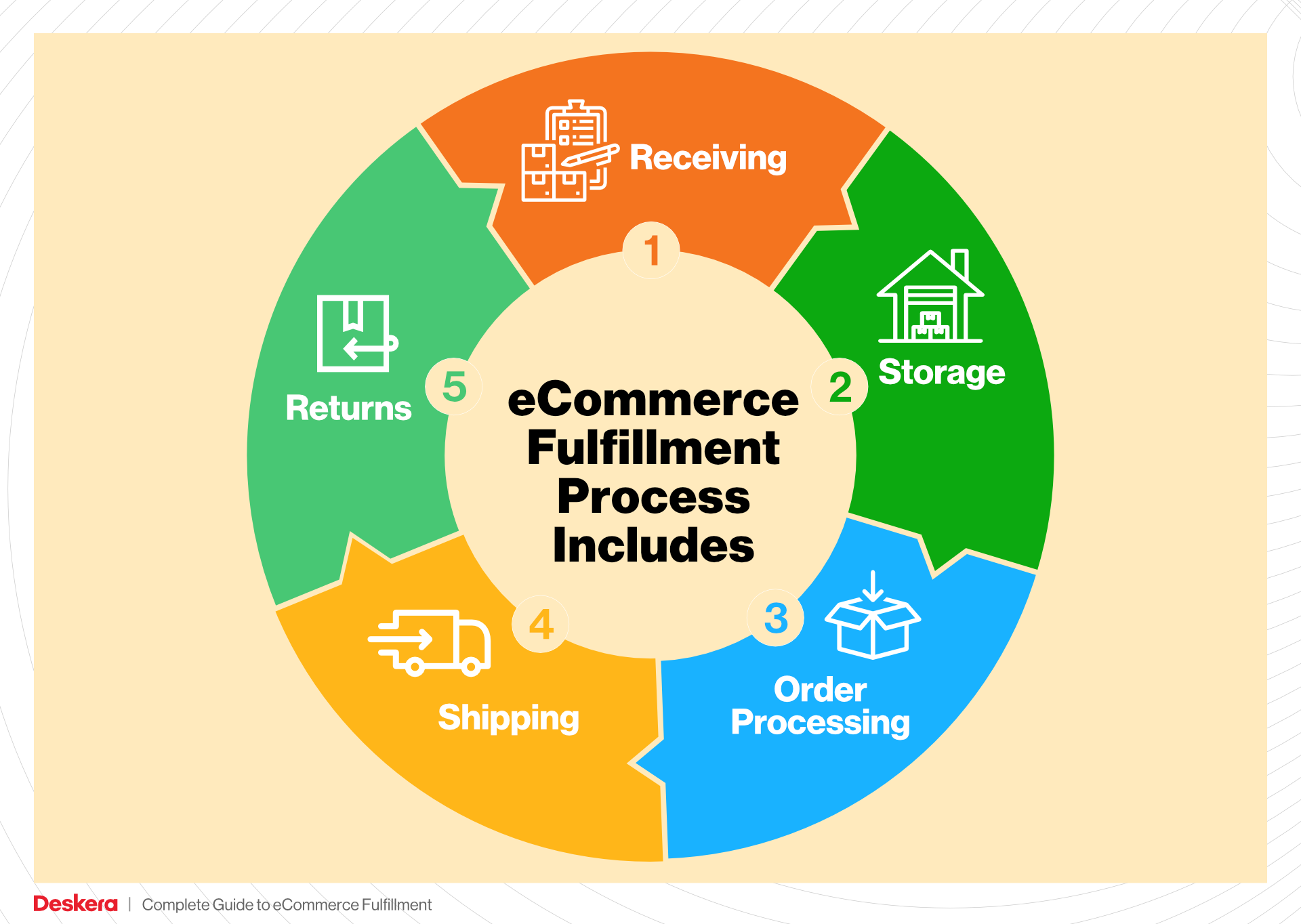
-
Pricing Structures: Understanding the costs associated with different fulfillment services is essential for budgeting and financial planning. We will explore common pricing models and factors that can influence your fulfillment costs, helping you to avoid unexpected expenses.
Empowering Your Business Decisions
Ultimately, this guide is designed to empower you to make informed decisions about your logistics strategy. By understanding e-commerce fulfillment and its intricacies, you can streamline your operations, improve customer satisfaction, and position your business for sustainable growth. Whether you’re just starting or looking to optimize an existing process, the insights provided will equip you with the knowledge needed to enhance your fulfillment strategy effectively.
What You’ll Learn In This Guide
- What is E-commerce Fulfillment? An Introduction for Growing Businesses
- The Order Fulfillment Process: From ‘Buy’ Button to Customer’s Door
- Comparing Fulfillment Models: In-House vs. 3PL vs. Dropshipping
- A Deep Dive into Amazon FBA: Pros, Cons, and Who It’s For
- Core Services Offered by Fulfillment Centers
- How to Choose a Fulfillment Partner: A 6-Point Checklist
- Understanding Fulfillment Pricing: A Breakdown of Common Fees
- Frequently Asked Questions (FAQs) about Fulfillment
- Conclusion: Is Outsourcing Fulfillment the Right Move for Your Business?
- Important Disclaimer
The Order Fulfillment Process: From ‘Buy’ Button to Customer’s Door
1. Receiving Inventory
The first step in the order fulfillment process begins with receiving inventory. This is where products are delivered to the fulfillment center from manufacturers or suppliers. Upon arrival, items are inspected for quality and accuracy, ensuring that the correct quantities and types of products are received. This step is crucial because it establishes the foundation for inventory accuracy and availability. A key term associated with this stage is SKU (Stock Keeping Unit), which is a unique identifier for each product that helps manage inventory levels effectively.
Having a well-organized receiving process minimizes discrepancies and ensures that the inventory management system reflects real-time stock levels. This accuracy is vital for maintaining customer satisfaction, as it directly influences the ability to fulfill orders promptly. If inventory is not accurately tracked from the outset, it can lead to stockouts or overstock situations that disrupt the entire supply chain.
2. Warehouse Storage
After receiving inventory, the next step is warehouse storage. This involves organizing the products in a manner that optimizes space and facilitates efficient order picking. Products are typically stored based on their SKU numbers, with fast-moving items placed closer to the picking area for quicker access. The importance of this step cannot be overstated, as an organized warehouse directly impacts the overall efficiency of the fulfillment process.
One key term here is ABC analysis, a method used to categorize inventory based on importance and turnover rates. This analysis helps prioritize which items should be easily accessible and which can be stored further away. By implementing effective storage strategies, businesses can reduce the time it takes to locate and pick items, leading to faster order processing times and ultimately enhancing customer satisfaction.
3. Order Picking
Order picking is the next critical step in the fulfillment process, where items are selected from the warehouse to fulfill customer orders. This step involves using a pick list, which is a document or digital format that outlines the items and quantities needed for each order. Efficient order picking is essential, as it directly affects the speed and accuracy of order fulfillment.
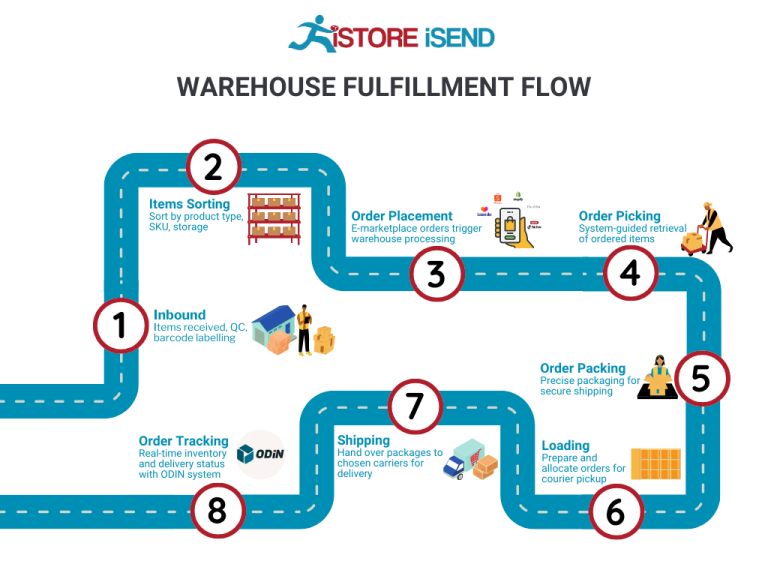
There are various picking methods, including single order picking, batch picking, and zone picking. The choice of method depends on the volume of orders and the layout of the warehouse. Implementing automation tools, such as pick-to-light systems or robotic picking, can further enhance efficiency. The importance of this step lies in its impact on order accuracy and speed; mistakes in picking can lead to incorrect shipments, resulting in customer dissatisfaction and increased return costs.
4. Order Packing
Once the items are picked, they move to the order packing stage. This involves carefully packing the selected items into boxes or containers for shipment. Proper packing is crucial for protecting products during transit and ensuring they arrive in excellent condition. A key term associated with this step is packing slips, which are included in the shipment and provide details about the contents of the package.
Effective packing processes also consider factors such as weight, dimensions, and shipping requirements, which can affect shipping costs and delivery speed. Using the right packing materials and methods can prevent damage and reduce return rates. Moreover, a well-executed packing process improves operational efficiency and contributes to a positive customer experience, as customers appreciate receiving their orders in perfect condition.
5. Shipping & Delivery
The final step in the order fulfillment process is shipping and delivery. After packing, orders are labeled and handed over to carriers for transport to the customer. This step is critical as it determines how quickly and reliably products reach their destination. Key terms associated with shipping include tracking numbers, which allow customers and businesses to monitor the status of their shipments.
Choosing the right shipping partners and methods can significantly impact delivery times and costs. Companies often utilize a combination of carriers to optimize their shipping strategies based on factors such as destination, package size, and delivery speed. Timely and reliable delivery is paramount in e-commerce, as it directly affects customer satisfaction and retention. A streamlined shipping process not only enhances the customer experience but also supports the overall scalability of the business by ensuring that orders are fulfilled efficiently and accurately.
By understanding and optimizing each of these five steps—receiving inventory, warehouse storage, order picking, order packing, and shipping & delivery—e-commerce businesses can significantly improve their order fulfillment processes, leading to enhanced customer satisfaction and growth opportunities.
Comparing Fulfillment Models: In-House vs. 3PL vs. Dropshipping
Fulfillment Model Comparison
| Model | Who Handles Inventory | Best For (Business Stage) | Key Advantage | Key Disadvantage |
|---|---|---|---|---|
| In-House Fulfillment | Business itself | Established businesses | Full control over inventory and processes | High overhead costs and operational complexity |
| Third-Party Logistics (3PL) | Third-party provider | Growing businesses | Scalability and reduced operational burden | Less control over inventory and potential delays |
| Dropshipping | Supplier | Startups and small businesses | Low startup costs and no inventory risk | Lower profit margins and reliance on suppliers |
In-House Fulfillment
In-house fulfillment means that a business manages its own inventory and logistics operations. This model is typically best suited for established businesses that have the necessary resources to handle the complexities of order fulfillment. Companies that choose in-house fulfillment benefit from complete control over their inventory, allowing for personalized customer service and the ability to quickly adapt to changes in demand. They can also implement custom processes that align closely with their business strategies. However, this model comes with significant challenges. The overhead costs can be substantial due to the need for warehousing, staff, and technology investments. Additionally, operational complexity can increase as the business scales, potentially leading to inefficiencies if not managed properly.
Third-Party Logistics (3PL)
Third-party logistics (3PL) involves outsourcing the fulfillment process to a third-party provider. This model is particularly beneficial for growing businesses that want to scale their operations without incurring the high costs associated with in-house fulfillment. By partnering with a 3PL, businesses can leverage the provider’s existing infrastructure, expertise, and technology to manage inventory, warehousing, and shipping. One of the key advantages of this model is scalability; businesses can easily adjust their fulfillment capabilities based on fluctuating demand. Additionally, 3PL providers often have established relationships with carriers, which can lead to better shipping rates and faster delivery times. However, the primary disadvantage is the reduced control over inventory and fulfillment processes, which can lead to potential delays and inconsistencies in service quality if the provider does not meet expectations.
Dropshipping
Dropshipping is a fulfillment model where the retailer does not keep products in stock but instead transfers customer orders directly to the supplier, who then ships the products directly to the customer. This model is ideal for startups and small businesses looking to minimize upfront costs and avoid the complexities of inventory management. With dropshipping, businesses can offer a wide range of products without the need for significant capital investment in inventory. The key advantage lies in the low startup costs and the absence of inventory risk, allowing entrepreneurs to focus on marketing and sales. However, dropshipping can also present challenges, including lower profit margins due to reliance on suppliers and less control over shipping times and product quality. Additionally, businesses may face difficulties in managing customer service and return processes, as they are dependent on third-party suppliers to fulfill orders accurately and timely.
Conclusion
When deciding on a fulfillment model, e-commerce business owners must carefully evaluate their business stage, available resources, and long-term growth plans. Each model—In-House Fulfillment, Third-Party Logistics, and Dropshipping—has its unique advantages and disadvantages, making it essential to align the chosen strategy with the overall business objectives. By understanding these models, entrepreneurs can make informed decisions that will help them scale their operations effectively while maintaining a high level of customer satisfaction.
A Deep Dive into Amazon FBA: Pros, Cons, and Who It’s For
Understanding Fulfillment by Amazon (FBA)
Fulfillment by Amazon (FBA) is a service provided by Amazon that allows sellers to store their products in Amazon’s fulfillment centers. Amazon then takes care of storage, packaging, and shipping of these products directly to customers. This service is designed to simplify the logistics of e-commerce, enabling sellers to focus on other aspects of their business while leveraging Amazon’s vast distribution network and customer base.
How FBA Works
-
Product Listing: Sellers first create product listings on Amazon. They can choose to fulfill these orders themselves or opt for FBA.
-
Shipping to Amazon: Once a seller decides to use FBA, they ship their products to Amazon’s fulfillment centers. Amazon provides guidelines on how to prepare and ship products to ensure they are processed efficiently.
-
Storage: The products are stored in Amazon’s warehouses until they are sold. Amazon uses sophisticated inventory management systems to keep track of stock levels and product availability.
-
Order Fulfillment: When a customer places an order, Amazon picks, packs, and ships the product on behalf of the seller. This includes handling customer service and returns.
-
Prime Eligibility: Products fulfilled by Amazon are eligible for Amazon Prime, which can significantly increase their visibility and attractiveness to customers.
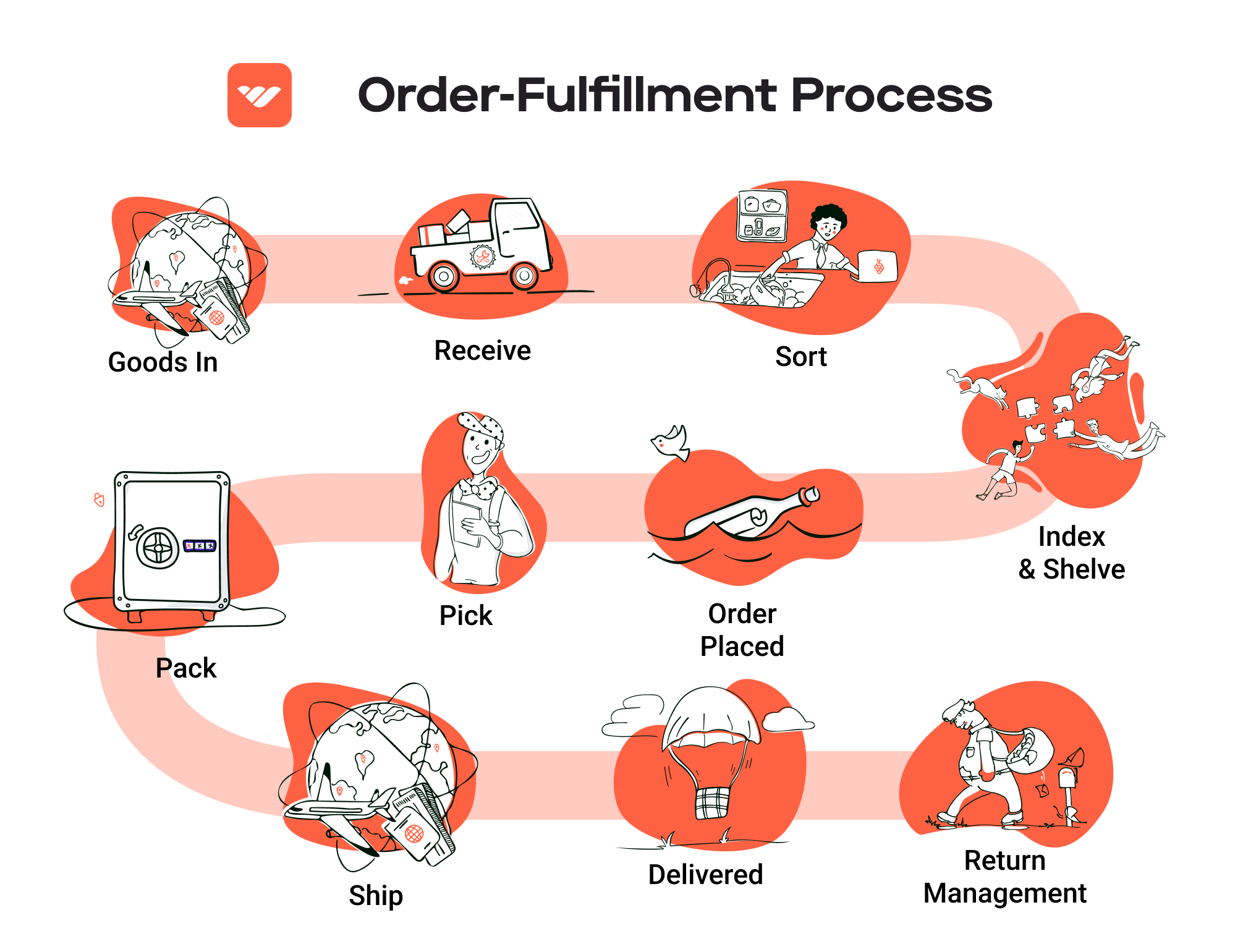
Pros of Using FBA
-
Prime Eligibility: One of the most significant advantages of FBA is that it allows sellers to offer their products with Amazon Prime eligibility. This can lead to increased sales, as many customers prefer to shop for Prime-eligible items due to the fast and free shipping options.
-
Customer Trust: Leveraging Amazon’s reputation can enhance customer trust. When buyers see that a product is fulfilled by Amazon, they are more likely to purchase it, knowing that they will receive reliable service and support.
-
Multi-Channel Fulfillment: FBA isn’t limited to Amazon.com. Sellers can use FBA to fulfill orders from other sales channels as well, such as their own websites or other e-commerce platforms. This flexibility allows businesses to streamline their logistics across multiple sales channels.
-
Scalability: FBA allows sellers to scale their businesses without the need to invest heavily in warehousing and logistics infrastructure. As demand grows, sellers can send more inventory to Amazon’s fulfillment centers without worrying about storage space.
-
Time Savings: Outsourcing fulfillment to Amazon frees up time for sellers, allowing them to focus on marketing, product development, and customer engagement instead of logistics.
-
Advanced Logistics Technology: Sellers benefit from Amazon’s sophisticated logistics technology, which includes inventory management, order tracking, and shipping automation.
Cons of Using FBA
-
High Fees: FBA comes with various fees, including storage fees and fulfillment fees. For sellers with lower margins, these costs can eat into profits significantly. It’s essential to calculate these fees carefully when pricing products.
-
Strict Inventory Rules: Amazon has stringent inventory management policies. Sellers must ensure that their products are compliant with these rules, which can be a challenge for those with high SKU counts or complex inventory needs.
-
Commingling Risks: With FBA, products from different sellers can be commingled in Amazon’s warehouses. This means that if a customer returns a product, it may be difficult to track which seller the product came from. This can lead to quality control issues and potential disputes over returns.
-
Loss of Control: By using FBA, sellers relinquish some control over the fulfillment process. This includes aspects like packaging, shipping speed, and customer service, which are managed by Amazon. For some brands, maintaining control over the customer experience is crucial.
-
Limited Customization: Sellers have limited options for customizing packaging and branding when using FBA. This can be a disadvantage for businesses looking to create a unique brand experience.
-
Inventory Limitations: Amazon sets limits on how much inventory sellers can send to its fulfillment centers based on sales history and storage capacity. This can restrict growth for sellers who want to scale quickly.
Who is FBA Best For?
Fulfillment by Amazon is particularly beneficial for:
-
Small to Medium-Sized Businesses: Those who lack the resources to manage their own logistics can benefit significantly from FBA’s comprehensive fulfillment services.
-
E-commerce Entrepreneurs: Individuals or startups looking to enter the e-commerce space can leverage FBA to gain immediate access to Amazon’s vast customer base and logistical capabilities.
-
Businesses with High Sales Volume: Sellers who anticipate high sales volumes can maximize the benefits of FBA by reducing the time and effort spent on order fulfillment.
-
Brands Seeking Prime Access: Companies that want to take advantage of Amazon Prime’s customer base will find FBA an essential tool for improving visibility and sales.
-
Sellers Looking for Scalability: Those who plan to grow their business and need a scalable solution without investing heavily in logistics can find FBA to be a valuable asset.
In conclusion, while Fulfillment by Amazon offers numerous advantages that can help businesses streamline their operations and enhance customer trust, it also comes with challenges that must be carefully managed. Understanding the pros and cons will empower e-commerce entrepreneurs and operations managers to make informed decisions about whether FBA aligns with their business goals.
Core Services Offered by Fulfillment Centers
Inventory Management & Warehousing
Inventory management and warehousing are foundational services provided by fulfillment centers, crucial for any e-commerce business aiming to scale operations. This service involves the systematic tracking of inventory levels, orders, sales, and deliveries. Fulfillment centers utilize advanced software systems to monitor stock in real-time, ensuring that businesses have the right amount of products on hand to meet customer demand without overstocking.
Benefits:
1. Optimized Stock Levels: By maintaining accurate inventory records, fulfillment centers help businesses avoid stockouts or excess inventory, both of which can lead to lost sales or increased holding costs.
2. Space Efficiency: Fulfillment centers are designed to maximize storage space through strategic layout and organization, which helps businesses save on warehousing costs compared to managing their own facilities.
3. Scalability: As a business grows, fulfillment centers can easily adjust their storage capabilities, allowing for a seamless transition as order volumes increase without the need for significant capital investment in new facilities.
Pick and Pack Services
Pick and pack services refer to the process of selecting (or “picking”) items from inventory to fulfill customer orders and then packing those items for shipment. This service is integral to the efficiency of e-commerce operations, particularly during peak seasons or promotional events where order volumes can surge.
Benefits:
1. Speed and Accuracy: Fulfillment centers employ trained staff and automated systems to ensure that items are picked accurately and packed quickly, which enhances customer satisfaction through timely and correct deliveries.
2. Cost Efficiency: Outsourcing pick and pack services can reduce labor costs and overhead associated with hiring, training, and managing in-house staff, enabling businesses to focus on core activities like marketing and product development.
3. Customization Options: Fulfillment centers often offer various packing options, including branded packaging, which can enhance the unboxing experience for customers and strengthen brand loyalty.
Kitting and Assembly
Kitting and assembly involve the process of grouping individual items into ready-to-ship sets or kits. This service is particularly beneficial for businesses that offer bundled products or promotional packages, allowing them to streamline the order fulfillment process.
Benefits:
1. Enhanced Product Offerings: Kitting allows businesses to create unique product bundles that can attract more customers and increase average order values, providing a competitive edge in the market.
2. Reduced Handling Time: By assembling products in advance, fulfillment centers minimize the time spent on order processing, enabling faster shipment times and improved customer satisfaction.
3. Inventory Management Simplification: Kitting can simplify inventory management by allowing businesses to track bundled items as single units, reducing the complexity of stock management.
Returns Management (Reverse Logistics)
Returns management, or reverse logistics, is the process of handling returned products efficiently. This service is essential for e-commerce businesses, as it directly impacts customer satisfaction and the overall shopping experience. Fulfillment centers streamline the returns process, from receiving returned items to restocking and processing refunds.
Benefits:
1. Improved Customer Experience: A well-managed returns process enhances customer trust and satisfaction, as easy returns can lead to repeat purchases and positive word-of-mouth.
2. Cost Reduction: Fulfillment centers can help minimize costs associated with returns by implementing efficient processes for inspecting, sorting, and restocking returned items, thereby reducing waste and improving recovery rates.
3. Data Insights: By analyzing return data, fulfillment centers can provide valuable insights into customer preferences and product issues, enabling businesses to make informed decisions about inventory and product offerings.
In conclusion, leveraging the core services offered by fulfillment centers, such as inventory management, pick and pack, kitting, and returns management, can significantly enhance the operational efficiency of e-commerce businesses. These services not only streamline logistics but also contribute to a better customer experience, ultimately driving growth and profitability in a competitive market. As businesses look to scale, partnering with a capable fulfillment center can be a strategic move that supports their logistics needs and enhances overall service delivery.
How to Choose a Fulfillment Partner: A 6-Point Checklist
Location & Warehouse Network
Why It’s Important:
The location of your fulfillment partner’s warehouses directly impacts shipping times, costs, and your ability to serve customers efficiently. A strategically located fulfillment center can reduce shipping distances, leading to faster delivery and lower transportation costs.
Questions to Ask:
– Where are your warehouses located, and how does that align with my target customer base?
– What is your shipping coverage area? Do you have facilities in regions where my customers are concentrated?
– How do you manage inventory across multiple locations, and can you offer distributed inventory solutions?
Technology & Integrations
Why It’s Important:
In today’s e-commerce landscape, technology plays a crucial role in streamlining operations. A fulfillment partner that utilizes advanced technology can enhance order accuracy, improve inventory management, and provide real-time visibility into your supply chain.
Questions to Ask:
– What fulfillment technology do you use (e.g., WMS, order management systems)?
– Can your systems integrate with my existing platforms (e.g., e-commerce site, ERP software)?
– How do you ensure data security and compliance with regulations?
Specializations (e.g., Cold Storage, Oversized Items)
Why It’s Important:
Different products have unique storage and handling requirements. If your business deals with perishable goods, oversized items, or hazardous materials, partnering with a 3PL that specializes in these areas is essential for compliance, safety, and customer satisfaction.
Questions to Ask:
– Do you have specialized facilities for my product type (e.g., cold storage for perishables, handling for oversized items)?
– What processes do you have in place to ensure product integrity during storage and shipping?
– Can you accommodate seasonal fluctuations in inventory and demand for specialized products?
Scalability & Capacity
Why It’s Important:
As your business grows, your fulfillment needs will evolve. A partner that can scale operations in response to your growth is crucial. This includes not only the physical capacity to handle more orders but also the ability to adapt to changing market conditions.
Questions to Ask:
– How do you manage scalability during peak seasons or unexpected demand surges?
– What is your current capacity, and how do you plan to expand it in the future?
– Can you handle a wide range of order volumes, from small batches to large bulk orders?
Pricing and Contracts
Why It’s Important:
Understanding the pricing structure and contract terms of your fulfillment partner is vital for maintaining profitability. Transparent pricing helps you budget effectively and avoid unexpected costs that can erode margins.
Questions to Ask:
– What is your pricing model (e.g., per order, storage fees, shipping rates)?
– Are there any hidden fees or additional costs I should be aware of?
– What are the terms of your contracts, and is there flexibility for renegotiation based on changing needs?
Customer Support & Reviews
Why It’s Important:
Reliable customer support is essential for resolving issues quickly and maintaining smooth operations. Additionally, reviews and testimonials from other clients can provide insights into the partner’s reliability and service quality.
Questions to Ask:
– What kind of customer support do you offer (e.g., dedicated account manager, 24/7 support)?
– How do you handle customer complaints or operational issues?
– Can you provide references or case studies from clients in my industry?
Conclusion
Choosing the right fulfillment partner is a critical decision that can significantly impact your e-commerce business. By carefully considering the points outlined in this checklist, you can ensure that you select a partner who aligns with your operational needs, growth objectives, and customer service standards. A well-chosen fulfillment partner not only enhances efficiency but also contributes to an improved customer experience, ultimately driving sales and fostering loyalty.
Understanding Fulfillment Pricing: A Breakdown of Common Fees
Initial Setup Fees
When partnering with a fulfillment center, businesses often encounter initial setup fees. These are one-time charges associated with establishing your account and integrating your systems with the fulfillment provider. This may include costs for software integration, account management setup, and any necessary training for your team.
The calculation of initial setup fees can vary widely depending on the complexity of the services you require. For example, a basic setup might cost a few hundred dollars, while a more sophisticated integration—particularly if it involves custom software solutions or extensive training—could run into the thousands. It’s essential to clarify what is included in these fees and whether there are any recurring costs associated with maintenance or updates.
Receiving Fees
Receiving fees are charged when the fulfillment center accepts and processes incoming inventory. This fee typically covers the labor and resources required to unload, inspect, and log your products into the system.
Calculating receiving fees usually involves a per-pallet or per-box charge. For instance, a fulfillment center may charge $25 per pallet received, or $5 per box. Factors such as the condition of the goods upon arrival and the speed of processing can also influence the cost. Businesses should ensure they understand how these fees are structured and whether there are minimum charges or discounts for larger shipments.
Storage Fees (per pallet/bin)
Once your inventory is in the fulfillment center, storage fees apply. These fees are incurred for the space your products occupy and are typically calculated on a per-pallet or per-bin basis.
For example, a fulfillment center might charge $15 per pallet per month. This fee can vary based on the type of product, its size, and the length of time it is stored. Some centers may also offer tiered pricing, where the cost per pallet decreases as the volume of storage increases. To manage storage costs effectively, businesses should regularly review their inventory turnover and consider just-in-time inventory practices.
Pick & Pack Fees (per item/order)
Pick and pack fees cover the process of selecting items from inventory and preparing them for shipment. This is a crucial part of the fulfillment process and is usually charged on a per-item or per-order basis.
For instance, a fulfillment center may charge $1.50 per item picked and packed or offer a flat fee of $3.00 per order regardless of the number of items. The fee structure can depend on the complexity of the order, such as whether it includes multiple SKUs or requires special handling. Businesses should inquire about any additional costs for custom packaging or special instructions, as these can add to the overall fulfillment expense.
Shipping Fees
Shipping fees are the costs incurred to deliver products to customers. These fees can vary greatly based on several factors, including the shipping method (e.g., standard, expedited), package weight, dimensions, and destination.
Fulfillment centers often have negotiated rates with carriers, which can benefit businesses looking to reduce shipping costs. Shipping fees are typically calculated based on the weight of the package and the distance to the delivery address. It’s essential for businesses to understand the shipping options available, including any flat-rate or free shipping thresholds that could affect their pricing strategy.
Tips for Getting an Accurate Quote
To obtain an accurate quote from a fulfillment center, consider the following tips:
-
Detail Your Needs: Clearly outline your business model, including the types of products you sell, expected order volumes, and any special handling requirements.
-
Ask About All Fees: Ensure that you inquire about all potential fees, including those that may not be immediately obvious, such as returns processing or inventory management.
-
Compare Multiple Providers: Request quotes from several fulfillment centers to compare pricing structures and services offered. This will help you identify the best value for your business.
-
Negotiate Terms: Don’t hesitate to negotiate fees and terms, especially if you anticipate high volumes or long-term partnerships. Many fulfillment centers are willing to offer discounts for larger commitments.
-
Review Contracts Carefully: Before signing any agreements, review the contract thoroughly to ensure you understand all terms, including any hidden fees or penalties.
By understanding these common fulfillment pricing models and following these tips, e-commerce business owners can make informed decisions that optimize their logistics operations and support their growth strategies.
Frequently Asked Questions (FAQs) about Fulfillment
1. What is the H-E-B Houston e-commerce fulfillment center?
The H-E-B Houston e-commerce fulfillment center is a dedicated facility designed to streamline the processing of online grocery orders. Spanning 100,000 square feet, it supports both curbside pickup and home delivery services in the greater Houston metropolitan area, enhancing the efficiency and speed of order fulfillment.
2. How does the H-E-B fulfillment center improve order efficiency?
The fulfillment center utilizes advanced automation technologies, such as Swisslog’s AutoStore system, to optimize the picking and packing processes. This automation reduces aisle congestion in physical stores and allows for quicker order processing, ultimately improving product availability and customer satisfaction.
3. What is the difference between a warehouse and a fulfillment center?
A warehouse primarily focuses on storing inventory, while a fulfillment center is designed for order processing and shipping. Fulfillment centers typically have systems in place for picking, packing, and shipping orders directly to customers, enhancing the speed of delivery and improving the overall customer experience.
4. What are the benefits of using a fulfillment center like H-E-B’s?
Using a fulfillment center provides several benefits, including:
– Increased efficiency: Streamlined operations and automation speed up order processing.
– Improved inventory management: Enhanced product availability and reduced stockouts.
– Scalability: The ability to expand operations quickly in response to growing demand.
– Cost savings: Reduction in overhead costs associated with managing inventory and order fulfillment in-store.
5. What is a 3PL (Third-Party Logistics)?
A 3PL is a service provider that manages logistics and fulfillment operations for businesses. This can include warehousing, inventory management, order processing, and shipping. Companies often partner with 3PLs to leverage their expertise and resources, allowing them to focus on core business activities while ensuring efficient order fulfillment.
6. How much do fulfillment services cost?
The cost of fulfillment services can vary widely based on factors such as order volume, storage needs, and the complexity of services provided. Typically, costs may include:
– Storage fees: Charged per pallet or cubic foot of inventory stored.
– Fulfillment fees: Based on the number of orders processed or items picked and packed.
– Shipping costs: Based on carrier rates, package dimensions, and delivery speed.
It’s essential for businesses to evaluate their specific needs and compare quotes from multiple fulfillment service providers.
7. What types of products can be fulfilled through the H-E-B center?
The H-E-B Houston fulfillment center is designed to handle a wide range of grocery products, including fresh produce, packaged goods, and household essentials. The facility is stocked with items typically found in H-E-B stores, ensuring a diverse selection for online customers.
8. How does H-E-B’s fulfillment center impact delivery times?
H-E-B’s e-commerce fulfillment center is strategically located to minimize delivery times within the Houston metropolitan area. The use of automation and efficient order processing allows for quicker turnaround, often resulting in same-day or next-day delivery options for customers.
9. Are there job opportunities at the H-E-B Houston fulfillment center?
Yes, H-E-B frequently hires for both part-time and full-time positions at its fulfillment centers. Job openings may include roles in inventory management, order picking and packing, and logistics operations. Interested candidates should check H-E-B’s careers page for current listings.
10. How does H-E-B ensure product quality in its fulfillment process?
H-E-B employs strict quality control measures throughout its fulfillment process. This includes regular inventory checks, temperature-controlled storage for perishables, and thorough training for staff on handling and packing products. These practices help maintain high standards of quality and freshness for online orders.
Conclusion: Is Outsourcing Fulfillment the Right Move for Your Business?
Evaluating the Benefits of Outsourcing Fulfillment
Outsourcing your fulfillment operations can be a transformative decision for your e-commerce business. The key advantages of leveraging a fulfillment service include significant time savings, enhanced scalability, and access to specialized expertise. By entrusting your logistics to a dedicated partner, you free up valuable time that can be redirected towards strategic initiatives such as marketing, product development, and customer engagement. This shift not only boosts your productivity but also allows you to focus on scaling your business effectively.
Scalability is another compelling reason to consider outsourcing. As your e-commerce sales grow, so too does the complexity of your logistics. A fulfillment partner can provide the infrastructure necessary to handle increased order volumes without the need for substantial upfront investments in warehouse space, technology, or staffing. For instance, companies like H-E-B have expanded their fulfillment capabilities through dedicated centers equipped with advanced automation, demonstrating how strategic partnerships can enhance operational efficiency and customer service.
Moreover, working with a fulfillment service offers the advantage of expertise in logistics management. These partners often bring years of experience, industry knowledge, and technological resources that can optimize your supply chain and improve order accuracy. This expertise is critical in navigating the complexities of e-commerce fulfillment, particularly in an environment where consumer expectations are continually evolving.
The Importance of Choosing the Right Partner
However, it’s crucial to choose the right fulfillment partner aligned with your business goals. A misalignment can lead to inefficiencies and customer dissatisfaction. Take the time to evaluate potential partners based on their service offerings, technology, and reputation within the industry.
Call to Action
As you consider the next steps for your business, conduct a thorough audit of your current shipping and fulfillment processes. Assess whether a fulfillment partner could provide the scalability and expertise you need to elevate your operations. Investing in the right fulfillment strategy can position your business for sustainable growth and a competitive edge in the dynamic e-commerce landscape.
Important Disclaimer
⚠️ Important Disclaimer
The information in this guide is for educational purposes. Fulfillment services, pricing, and platform features change frequently. Always conduct your own due diligence and consult with providers directly before making business decisions.
